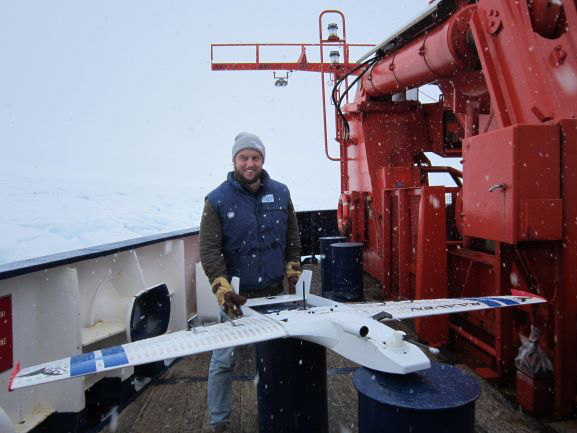by Radiance Calmer, a CIRES postdoctoral researcher
We are almost there! The initial floe, where the previous MOSAiC legs set up their installations on the ice, is only few nautical miles from us. However, we are taking our time to study the floe and decide where will be the best position for the Polarstern to relocate. We are all looking forward to going on the ice! Meanwhile, measurements have already started on board on the ship. Part of the ATMOS team has disappeared in the containers at the bow of the Polarstern, meticulously starting their instruments for aerosols, radiation, atmospheric profiles, and fluxes measurements. The other part of the team has made used of the wet lab at the back of the ship to prepare balloons and unmanned aerial systems (UAS), measurement platforms that will be deployed from the ice. Radio sounding has been happening for six days now, making available profiles of the atmosphere for temperature, relative humidity, and wind speed and direction. It’s also very interesting to learn about the other team’s work on the ice, about algae, microorganisms, etc. People are really passionate about the science they are doing, and they easily convey their enthusiasm when they describe their research interests.
For UAS preparation, the Datahawk – 90 cm wingspan fixed-wing UAS – is ready to fly and will continue the atmospheric measurements started during Leg 3. The RAAVEN, a larger fixed-wing UAS, which hasn’t flown for MOSAiC yet, is also ready to be deployed on the ice. As the big brother of the Datahawk, the RAAVEN carries similar sensors than the smaller UAS – temperature, relative humidity, pressure, turbulence – plus an additional probe for wind measurements. The RAAVEN flights will focus on leads, and how open water influences the interactions between the sea ice and the atmosphere. A third platform from CU, a copter for radiation measurements, is currently on the working bench for the last assembling steps.
We are looking forward to finally flying for MOSAiC!

